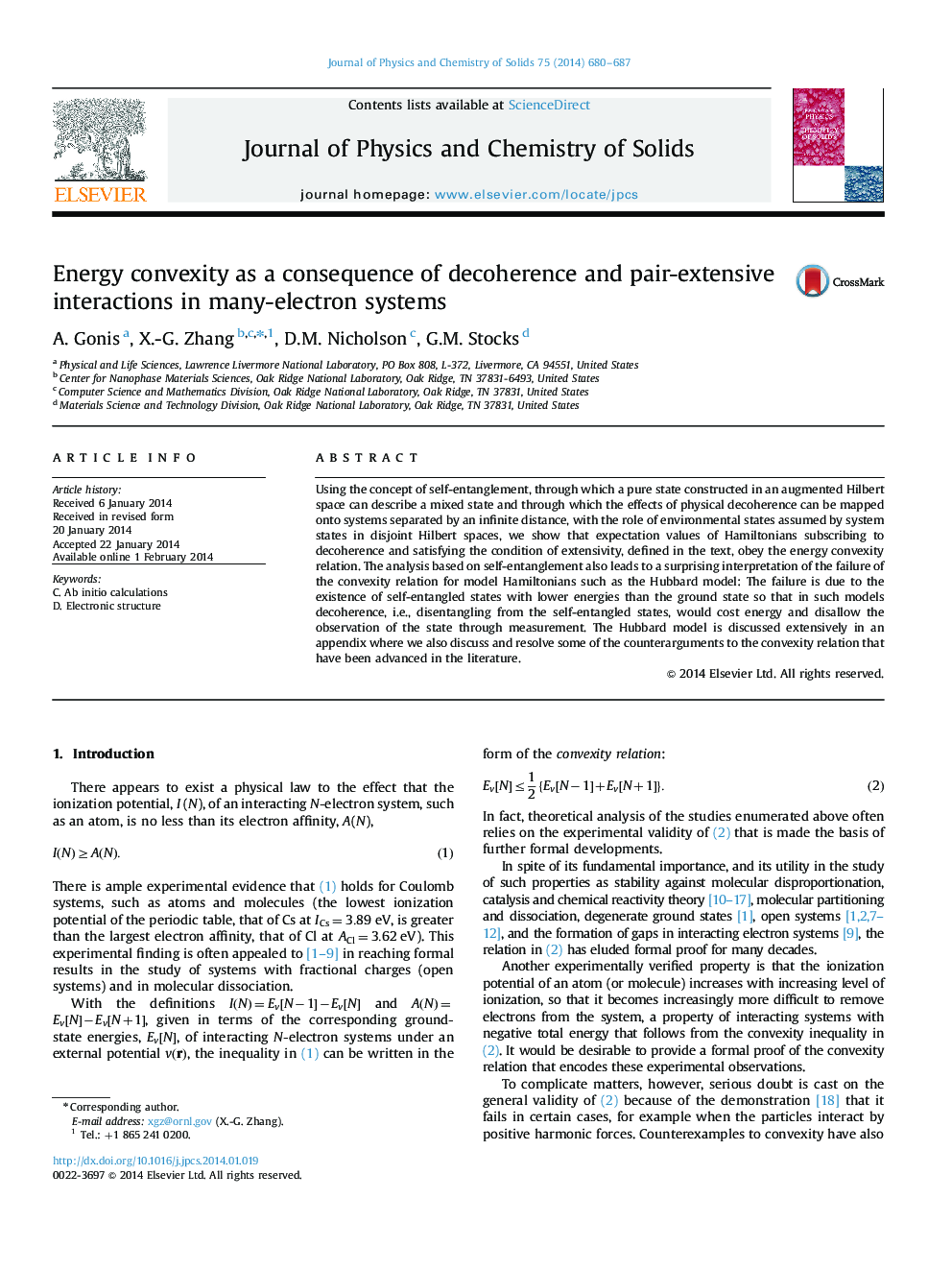| Article ID | Journal | Published Year | Pages | File Type |
|---|---|---|---|---|
| 1515809 | Journal of Physics and Chemistry of Solids | 2014 | 8 Pages |
Abstract
Using the concept of self-entanglement, through which a pure state constructed in an augmented Hilbert space can describe a mixed state and through which the effects of physical decoherence can be mapped onto systems separated by an infinite distance, with the role of environmental states assumed by system states in disjoint Hilbert spaces, we show that expectation values of Hamiltonians subscribing to decoherence and satisfying the condition of extensivity, defined in the text, obey the energy convexity relation. The analysis based on self-entanglement also leads to a surprising interpretation of the failure of the convexity relation for model Hamiltonians such as the Hubbard model: The failure is due to the existence of self-entangled states with lower energies than the ground state so that in such models decoherence, i.e., disentangling from the self-entangled states, would cost energy and disallow the observation of the state through measurement. The Hubbard model is discussed extensively in an appendix where we also discuss and resolve some of the counterarguments to the convexity relation that have been advanced in the literature.
Related Topics
Physical Sciences and Engineering
Materials Science
Electronic, Optical and Magnetic Materials
Authors
A. Gonis, X.-G. Zhang, D.M. Nicholson, G.M. Stocks,
